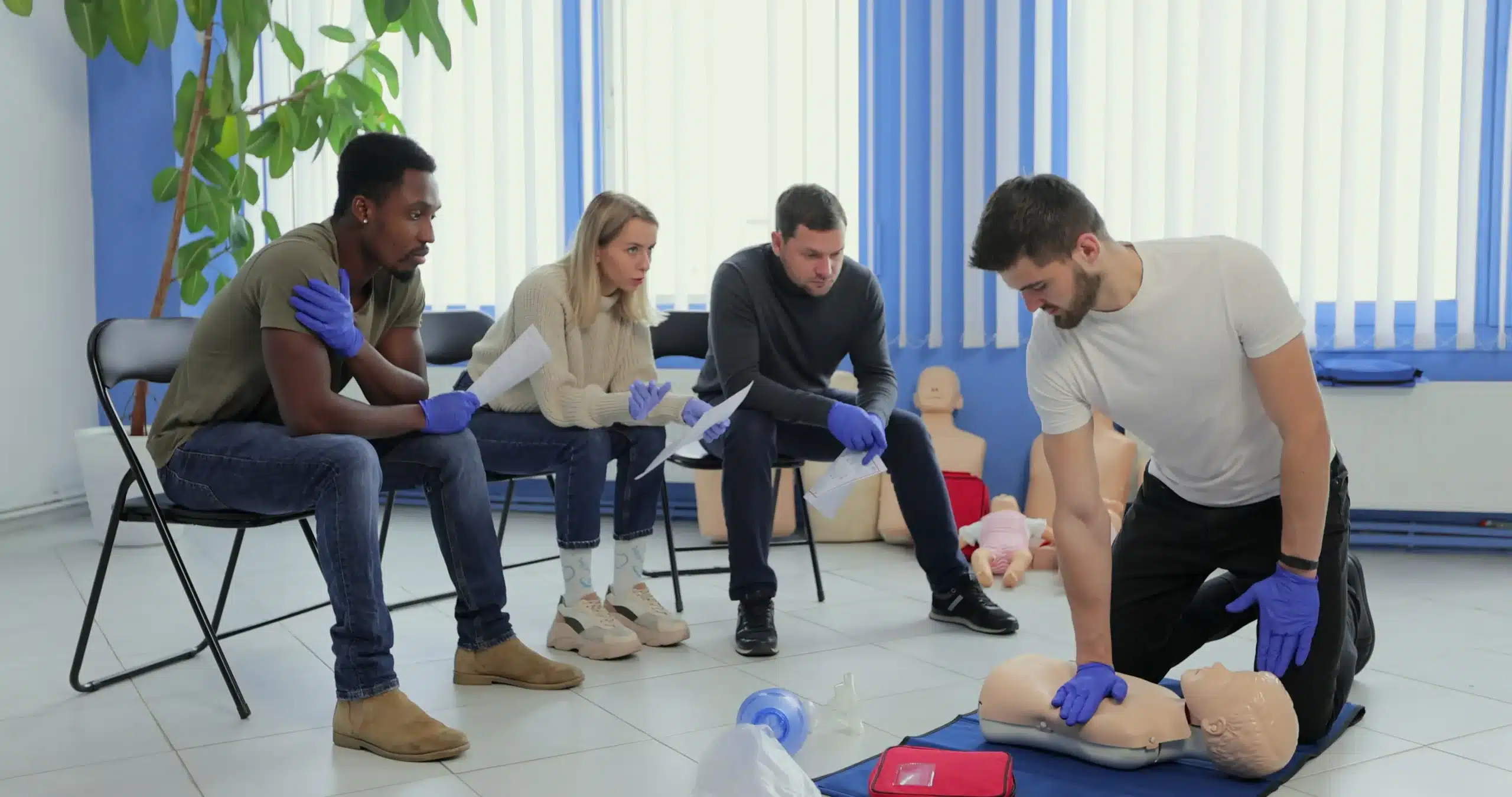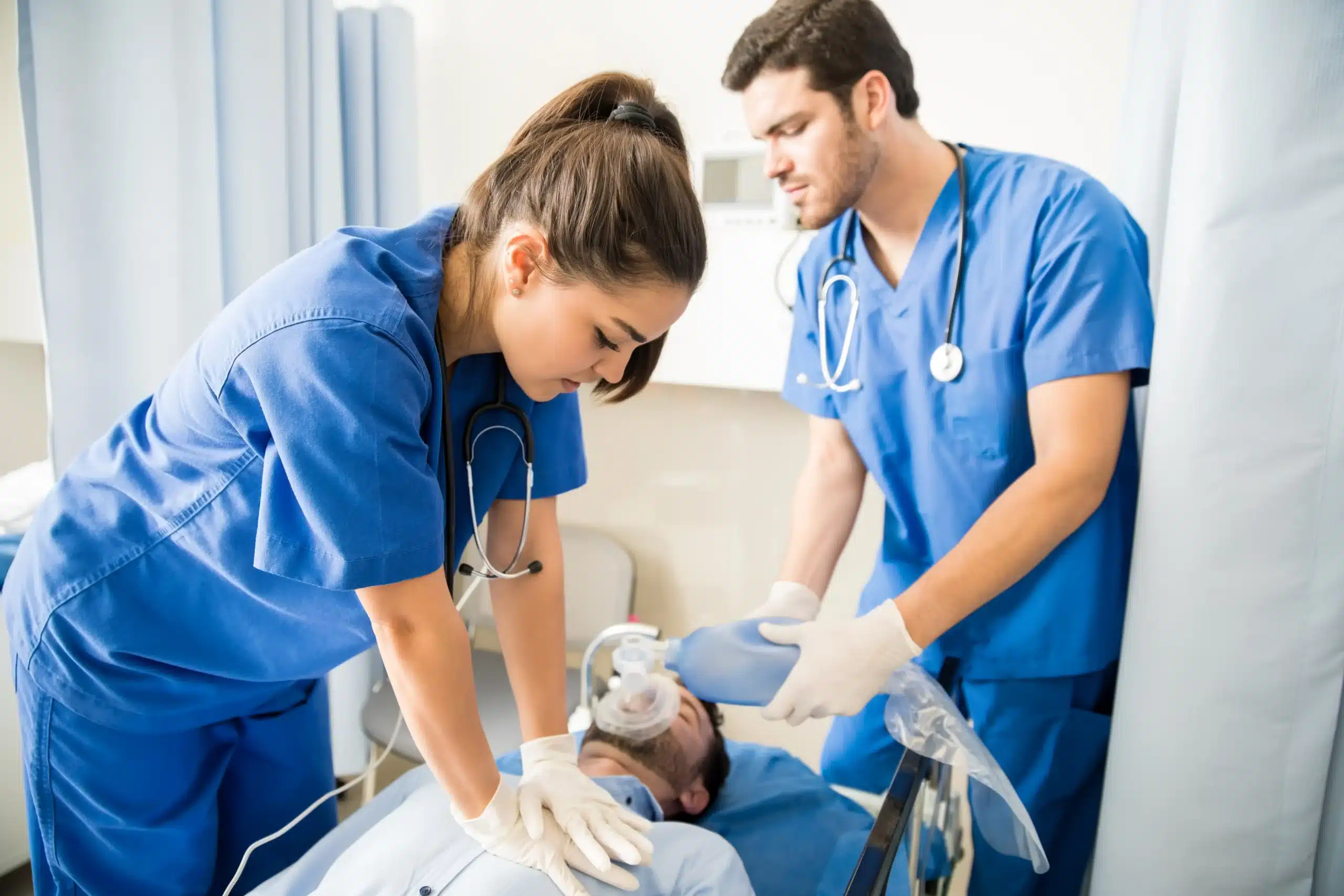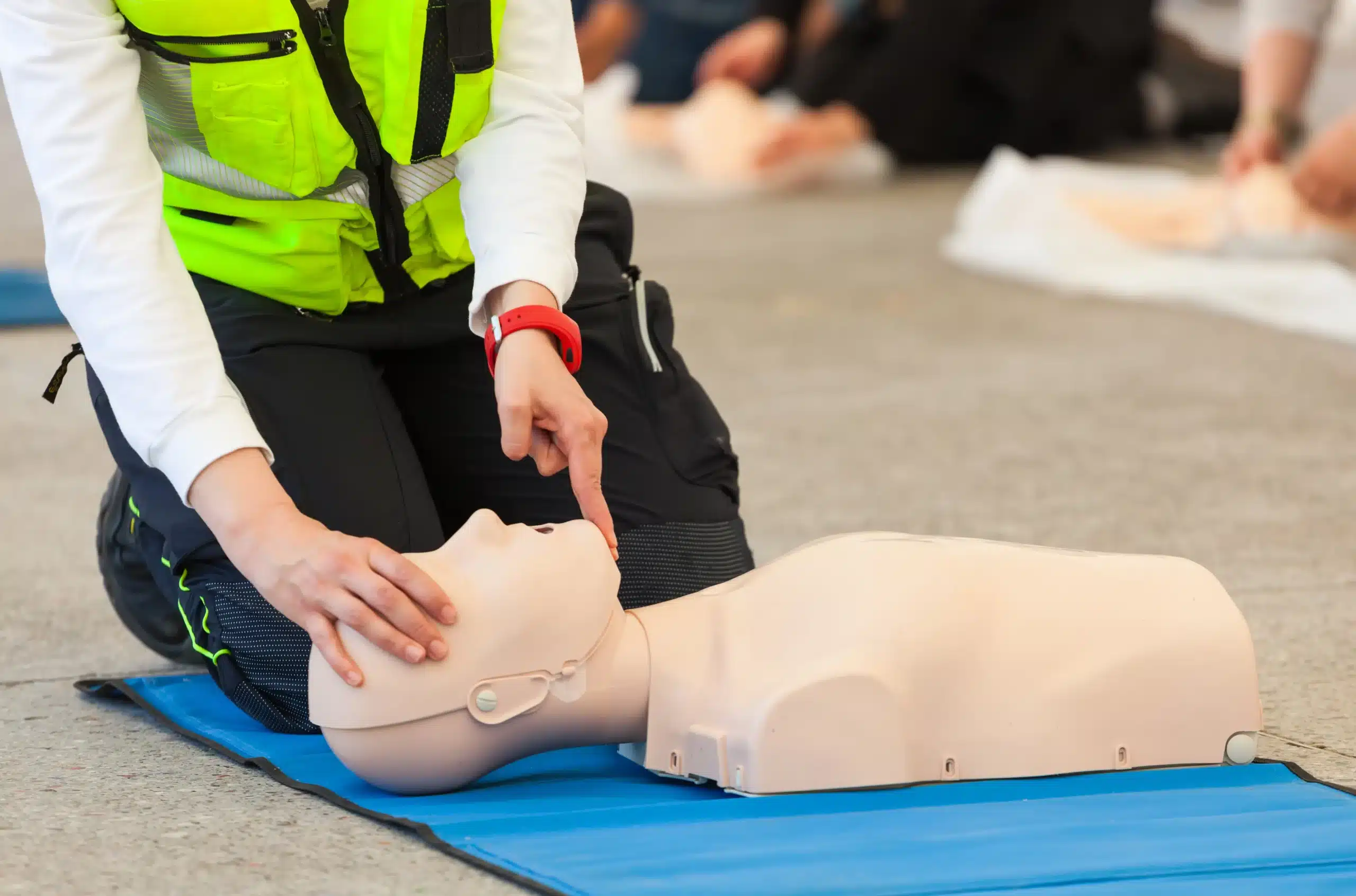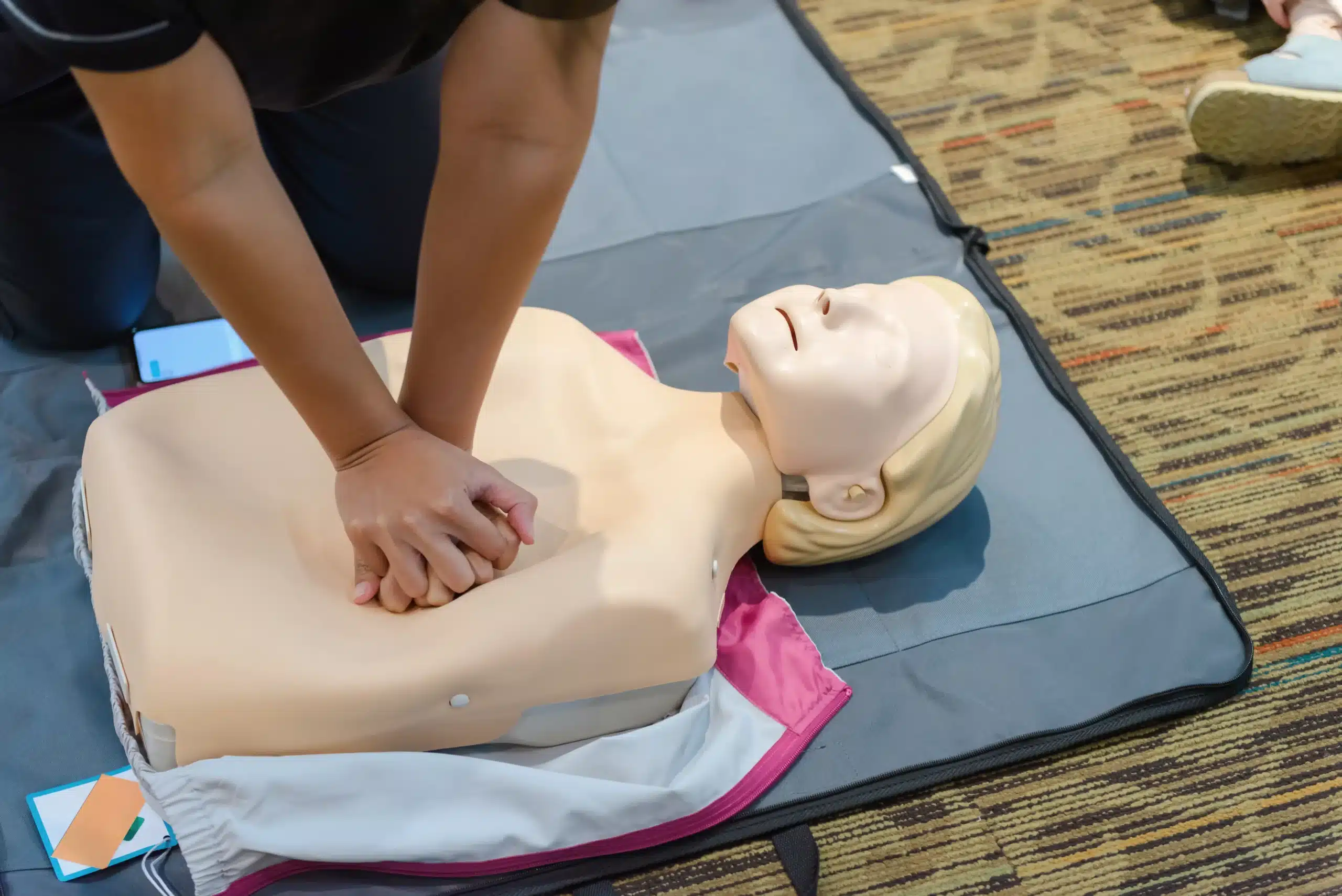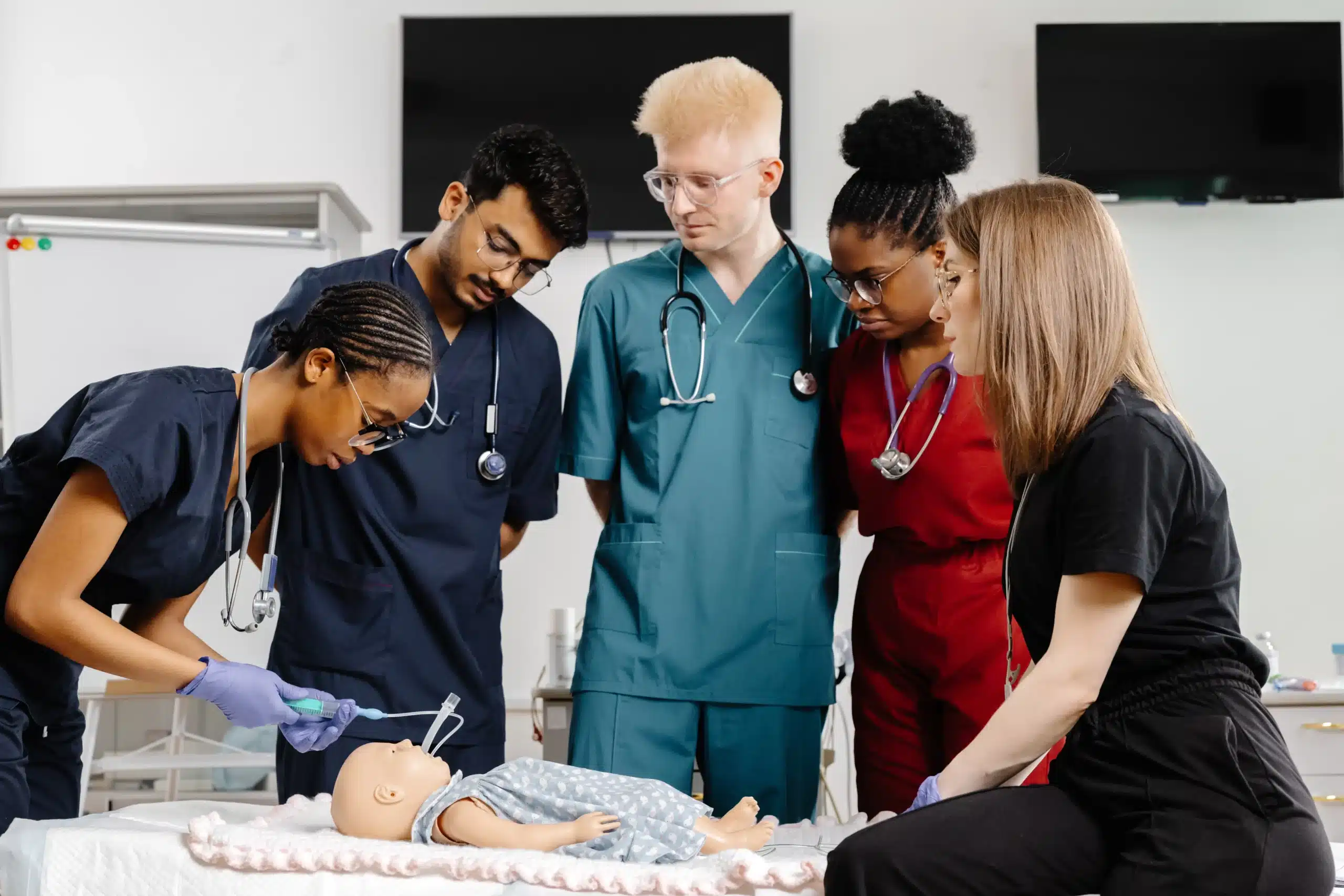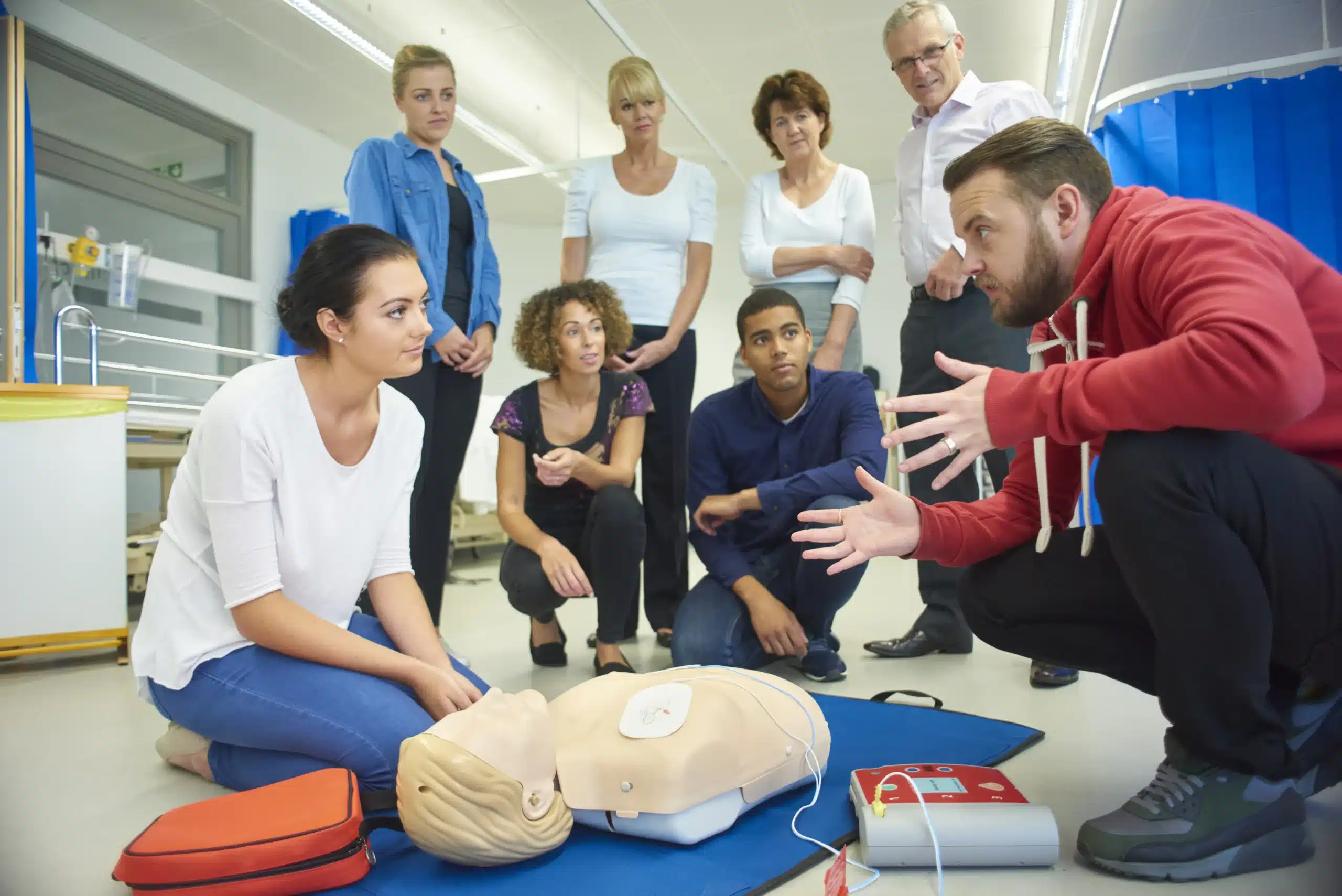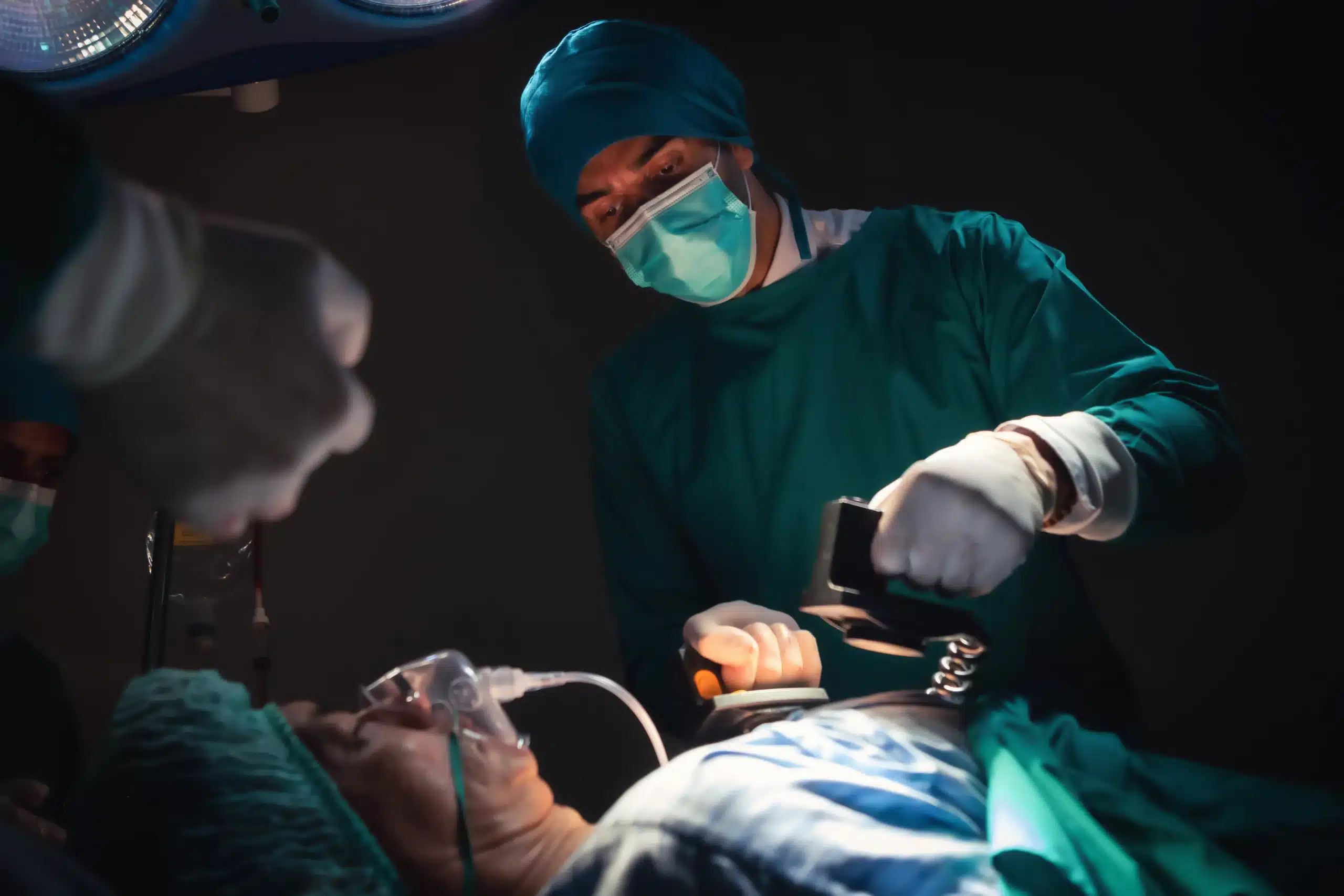Knowing how to respond to a medical emergency can be life-saving, but finding the right training can feel overwhelming. If you’re searching for “first-aid classes near me,” this guide simplifies the process. We’ll explore different first-aid levels, from basic wound care to advanced life support, and help you choose the right class format for your learning style. We’ll also cover how to find local classes, verify provider credibility (including checking for certified instructors), and compare costs. Plus, we’ll discuss what to expect during training, the importance of recertification, and top providers like Safety Training Seminars and the American Red Cross. Get ready to gain the confidence and skills to handle emergencies effectively.
Key Takeaways
- First aid skills empower you in any situation: Equipping yourself with first-aid knowledge builds confidence and prepares you for emergencies, from minor injuries to life-threatening events. Find a course format—online, in-person, or blended—that suits your lifestyle.
- The right training makes all the difference: Select a first-aid course based on your learning preferences, schedule, and certification needs. A credible provider and qualified instructor ensure you receive high-quality training.
- Stay prepared by keeping your skills current: First-aid knowledge requires ongoing practice. Regular refreshers and recertification maintain your preparedness and ensure you can respond effectively in emergencies.
What are First-Aid Classes?
First-aid classes teach you how to handle medical emergencies. Different courses address various needs, from basic life support to specialized care. Understanding these levels helps you choose the right training.
Basic First Aid
Basic first-aid courses cover essential skills for common injuries. You’ll learn to control bleeding, manage burns, treat wounds, and handle fainting. These classes benefit anyone who wants to feel prepared for everyday emergencies, especially for personal safety and family care. CPR training is often included.
CPR and AED Training
CPR and AED training focuses on life-saving techniques for cardiac emergencies. You’ll learn chest compressions, rescue breaths, and how to use an automated external defibrillator (AED). This training is crucial for anyone who might respond to a heart attack or other cardiac event. It’s often required for healthcare providers, teachers, and other professionals. Safety Training Seminars offers CPR classes throughout Northern California.
Specialized Courses
Advanced first-aid courses provide a deeper understanding of emergency medical care. Designed for people in high-risk environments or those who need more advanced skills, these courses might cover advanced airway management, medication administration, and emergency childbirth. If you’re a healthcare professional, wilderness guide, or someone who needs in-depth knowledge, a specialized course may be a good fit.
Find First-Aid Classes Near You
Finding the right first-aid class is easier than you think. Whether you prefer online convenience or the hands-on experience of an in-person class, several ways exist to find training near you.
Search Online
Start your search online. The American Red Cross website offers a convenient class locator tool, allowing you to quickly find options based on your location and desired course type. Many other reputable training providers also have online search tools, making it simple to compare schedules and pricing. Don’t forget to check local listings and community boards for classes offered by independent instructors or smaller organizations. You can also explore online directories specific to CPR training in your region, such as a Northern California CPR directory.
Check Local Organizations and Community Centers
Your local community is another great resource. Check with community centers, recreation departments, and even libraries, as they often host first-aid and CPR courses. Hospitals and fire departments frequently offer training to the public as well. These local options can be a more affordable alternative, and they offer the added benefit of connecting you with resources in your immediate area. Look for mobile training units or pop-up courses in community centers, which can make first aid training more accessible, especially in more rural areas.
Verify Provider Credibility
Before registering for any class, take a moment to verify the provider’s credibility. Look for organizations with a solid reputation, like Safety Training Seminars, that employ certified instructors with relevant experience. Ensure the curriculum aligns with established guidelines, such as those from the American Heart Association. Choosing a credible provider ensures you receive accurate, effective, and reliable training in life-saving techniques. A quality training provider should also offer continuing education opportunities, like RQI classes, to help you stay up-to-date with the latest first-aid practices. If pricing is a concern, look for providers who offer a low-price guarantee. Don’t hesitate to contact the provider directly with any questions you have about their programs.
Choose the Right Class Format
Deciding on the right first-aid class format depends on your learning style, schedule, and workplace requirements. Let’s break down the pros and cons of online, in-person, and blended learning options.
Online Classes: Pros and Cons
Online first-aid classes offer unparalleled flexibility. You can study at your own pace, squeezing in lessons whenever it suits you. This format works well for busy parents, professionals with unpredictable schedules, or anyone who prefers self-directed learning. The Red Cross offers a variety of online courses. However, online classes sometimes fall short on hands-on training, a critical component of effective first aid. While convenient, they may not provide the practical skills and confidence needed to respond effectively in a real emergency. Also, double-check that an online-only certificate meets your workplace or licensing requirements—some professions mandate in-person training. For those seeking online options, consider exploring the American Heart Association’s resources.
In-Person Training: Benefits and Considerations
In-person first-aid training provides a more immersive learning experience. You’ll benefit from direct interaction with experienced instructors, real-time feedback, and hands-on practice with equipment. This format is ideal for kinesthetic learners who thrive in a practical setting. In-person classes, like those offered by the Red Cross, often fulfill professional licensing and OSHA requirements. However, in-person classes require a greater time commitment, as you’ll need to attend scheduled sessions. Consider factors like travel time and class availability when choosing this option. Safety Training Seminars offers convenient in-person classes throughout Northern California. Check our Northern California CPR directory for a location near you.
Blended Learning
Blended learning combines the best of both worlds. You’ll complete online modules at your own pace, then attend an in-person session for hands-on skill checks and practice. This format offers flexibility while ensuring you meet practical training requirements. Blended learning accommodates various learning styles and often satisfies workplace and licensing standards. If you appreciate the convenience of online learning but also recognize the importance of hands-on training, this might be the perfect fit. The Red Cross also offers blended learning courses, combining online instruction with in-person skills sessions. You can also explore Safety Training Seminars’ RQI classes, which offer a blended learning approach to CPR certification.
Consider Costs and Value
Finding the right first-aid class involves balancing cost and value. Understanding typical price ranges, available discounts, and the long-term benefits can help you make an informed decision.
Typical Prices
First-aid and CPR class prices depend on the course type and provider. Basic adult CPR classes typically cost between $20 and $55, while pediatric CPR training ranges from $25 to $40. A combined CPR and first-aid course usually falls between $40 and $60. BLS CPR and AED training often costs around $79.95, with first-aid training adding another $20. Safety Training Seminars offers competitive pricing on a range of courses, including BLS certification. Our low price guarantee ensures you’re getting affordable training in Northern California.
Discounts and Promotions
Many training providers offer discounts and promotions. Look for deals like package pricing for multiple courses or discounts for group registrations. Contact us directly to inquire about current promotions for CPR, first-aid, and other RQI classes.
Weigh Cost Against Benefits
While costs vary, first-aid and CPR training is a valuable investment. The ability to respond effectively in an emergency can make a profound difference. Consider the potential to save a life—the benefits far outweigh the expense. These essential skills empower you to protect yourself, your loved ones, and your community. Plus, certifications like BLS are often required for healthcare professionals and other jobs. Explore our Northern California CPR directory to find a convenient class near you.
What to Expect in Class
So, you’ve signed up for a first-aid class—congratulations! Knowing what to expect can help you feel prepared and confident. Here’s a glimpse into a typical first-aid class experience:
Course Content
First-aid classes cover the essentials you’ll need in an emergency. Expect to learn about CPR, how to control bleeding, basic wound care, treating burns, and managing someone who has fainted. These core skills empower you to confidently handle various situations. More advanced first-aid courses cover more complex scenarios and specialized techniques. For example, you might learn how to use an AED or how to stabilize someone with a potential spinal injury.
Hands-On Practice
First-aid training isn’t just about lectures. Expect plenty of hands-on practice. You’ll work with instructors and other students to practice chest compressions, rescue breaths, and other techniques. In-person classes are especially valuable for this hands-on learning, giving you the chance to build muscle memory and confidence in a safe environment. This practical experience is key to effectively using your skills under pressure.
Assessment and Certification
Most first-aid courses include an assessment to ensure you’ve grasped the material. This often involves demonstrating the skills you’ve learned. After successfully completing the course, you’ll receive certification, usually valid for two years. Many providers, like Safety Training Seminars, issue your American Heart Association-certified CPR and First Aid cards the same day you finish the course. Recertification is important to keep your skills sharp and up-to-date. It’s a small investment to ensure you’re always ready to help.
Instructor Qualifications
When choosing a first-aid course, the instructor’s qualifications are just as important as the curriculum. A skilled instructor can make all the difference in how much you learn. Look for instructors who hold current certifications and have practical experience.
Required Certifications
First and foremost, your instructor should be certified by a reputable organization, such as the American Heart Association or the American Red Cross. These certifications demonstrate that the instructor has completed a rigorous training program and has the knowledge and skills to teach first aid effectively. For example, CPR and first-aid instructors at Safety Training Seminars meet these requirements. Check with your state’s Department of Health for any specific requirements or certifications instructors must hold in your area. This ensures the training aligns with industry standards and best practices.
Real-World Experience
While certifications are essential, real-world experience is invaluable. An instructor who has applied their first-aid skills in actual emergencies can offer unique insights and practical advice. Ask about the instructor’s background and experience in the field. Instructors who are also healthcare providers, such as nurses or paramedics, often bring a wealth of practical knowledge to the classroom. This hands-on experience can help you understand how to apply first-aid techniques in real-life scenarios. It also gives them the ability to answer your questions in a way that connects classroom learning to real-world situations.
Prepare for Your First-Aid Class
Knowing what to expect and how to prepare can make your first-aid training smoother and more effective. A little prep work goes a long way!
Required Materials
Most first-aid courses don’t require you to bring anything specific. Your instructor will provide all the necessary training materials, including bandages, dressings, and resuscitation mannequins. However, it’s always a good idea to bring a notebook and pen to jot down notes and key takeaways. Review the course outline beforehand to see if any specific materials are recommended.
Pre-Course Study Tips
While pre-course studying isn’t usually mandatory for basic first-aid classes, familiarizing yourself with basic first-aid principles can be beneficial. Brushing up on topics like wound care, CPR, and recognizing the signs of a medical emergency can give you a head start. Many providers, like Safety Training Seminars, offer resources that dispel common first-aid myths and misconceptions. This pre-course preparation can deepen your understanding and make the in-class learning experience more impactful.
Dress Code and Physical Requirements
First-aid classes often involve hands-on practice, including CPR and bandaging techniques. Wear comfortable clothing that allows for a full range of motion. You’ll want to be able to kneel, bend, and move freely. While there aren’t typically strenuous physical requirements for first-aid training, discuss any physical limitations or concerns with your instructor or the training provider in advance. They can offer modifications or support to ensure you can fully participate.
Maintain Your First-Aid Skills
Learning CPR and first aid isn’t a one-time thing. It’s a valuable life skill that can make a real difference in emergencies. Regularly brushing up on your training and practicing your skills can be crucial when seconds count.
Recertification
To make sure your first-aid skills stay sharp, it’s important to take recertification courses. Most certifications are valid for two years. After that, you’ll need to recertify to stay current. Recertification typically costs between $50 and $150 every one to two years, depending on the course and provider. Check with organizations like Safety Training Seminars for their recertification options.
Ongoing Practice and Refreshers
Beyond formal recertification, regular practice is key to maintaining your skills. Refresher courses or hands-on practice sessions can reinforce what you’ve learned and help you stay prepared. Many organizations offer these types of opportunities. They understand that real-world experience is a big part of providing effective first aid. Even practicing basic techniques with friends or family can help keep those skills fresh in your mind. Consider checking with your local American Red Cross or community center for available practice sessions.
Top First-Aid Training Providers
Finding the right first-aid training provider is key to receiving accurate and effective instruction in life-saving techniques. Several reputable organizations offer comprehensive first-aid and CPR training programs. Here are a few leading providers to consider:
Safety Training Seminars
Safety Training Seminars offers a range of American Heart Association courses, including CPR and first-aid certification. They focus on affordability and convenience, with a streamlined certification process through their RQI program. If you’re in Northern California, take a look at their CPR classes. They also have a low-price guarantee, so you can feel good about the value. Contact them to learn more about their offerings.
American Red Cross
The American Red Cross is a well-known provider of first-aid, CPR, and other safety training courses. They offer various learning formats, including online, in-person, and blended learning options. Explore their website to find a class that fits your needs. The Red Cross is a trusted name in emergency preparedness and response.
American Heart Association
The American Heart Association (AHA) provides high-quality first-aid and CPR training. They offer a wide range of courses, from basic life support (BLS) to advanced cardiovascular life support (ACLS). You can find AHA-certified training centers near you through their website. AHA certification is widely recognized and accepted.
National Safety Council
The National Safety Council plays a vital role in setting standards for first-aid training. Accreditation bodies like the NSC help ensure that certified providers offer comprehensive and up-to-date training. This focus on standardization helps maintain the quality and consistency of first-aid education.
St. John Ambulance
St. John Ambulance is a prominent international organization known for its first-aid training and services. They emphasize the importance of proper first-aid knowledge in emergencies. Explore their website for helpful resources and training programs.
Related Articles
- First-Aid Training in San Francisco: A Complete Guide – San Francisco Bay Area CPR Classes
- The Lifesaving Importance of CPR in Healthcare
- First Aid Classes San Francisco: Your Complete Guide
- CPR Training in Northern California: A Complete Guide – San Francisco Bay Area CPR Classes
- First Aid Training in Sacramento: Your Guide – San Francisco Bay Area CPR Classes
Frequently Asked Questions
What’s the difference between basic first aid and CPR?
Basic first aid focuses on treating common injuries like cuts, burns, and sprains. CPR, or cardiopulmonary resuscitation, specifically addresses life-threatening cardiac emergencies where someone’s breathing or heartbeat has stopped. While CPR might be included in some basic first-aid courses, it’s also offered as a standalone certification. Both are valuable skills to have.
How do I choose the right first-aid class?
Think about your specific needs and learning style. If you need a refresher or want to learn basic skills for everyday emergencies, a basic first-aid course might be perfect. If you’re a healthcare professional or need certification for your job, look for courses like BLS that meet workplace requirements. Consider whether you prefer the flexibility of online learning, the hands-on experience of in-person training, or a blended approach.
How much do first-aid and CPR classes cost?
Costs vary depending on the course type, provider, and your location. Basic first-aid and CPR classes can range from $20 to $60, while more advanced courses like BLS might cost around $80. Look for providers who offer package deals or discounts, and don’t hesitate to contact them directly to discuss pricing and payment options. Remember, the ability to potentially save a life is a priceless investment.
What should I expect during a first-aid class?
Expect a mix of instruction and hands-on practice. You’ll learn essential skills like CPR, wound care, and how to handle various medical emergencies. Instructors will guide you through demonstrations and provide feedback as you practice techniques. Most classes include an assessment to ensure you’ve grasped the material before receiving your certification.
How can I keep my first-aid skills current?
First-aid certifications are typically valid for two years. To maintain your skills, sign up for a recertification course before your current certification expires. Even between certifications, regular practice and refresher courses can help you stay sharp and confident in your abilities. Consider practicing with friends or family, or look for refresher courses offered by local organizations.


